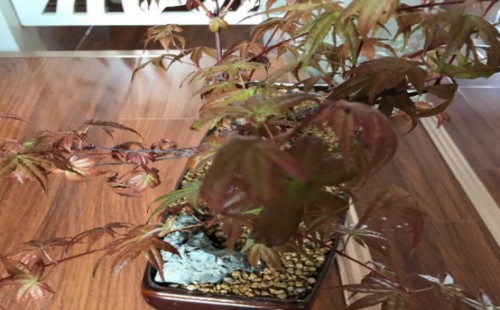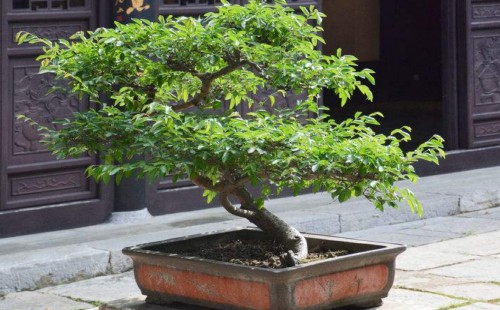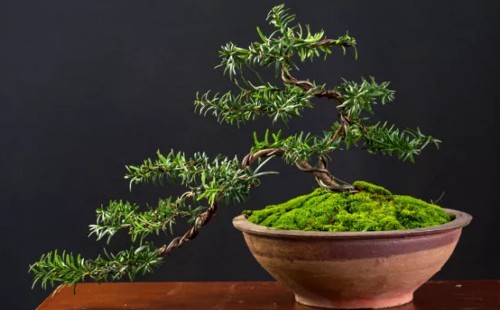What about the red maple bonsai leaves curling and withering?
In modern horticultural applications, with the widespread acceptance of color beautification effects, color green plants are increasingly loved by friends. And people are paying more and more attention to the green ecological environment on the high degree of color and nature integration. Red maple is widely used in public places because of its beautiful color and neat crown after entering autumn, especially American red maple, which is more dazzling. It is one of the precious color tree species for greening and beautifying urban environment in recent years.

Red maple is a kind of deciduous small tree suitable for growing in warm climate environment. It has the characteristics of drought tolerance, cold resistance, avoidance of strong light and fear of waterlogging. It is more suitable for planting and breeding in fertile and loose, breathable and permeable soil. As long as everyone can provide a suitable growth environment for it according to its habits and characteristics, and do a good job in conservation and management, it is generally easier to feed and raise it.
Of course, if we usually do not maintain the management work in place, it may still cause red maple to grow poorly. Recently, a friend of the pot reaction of their own red maple bonsai appeared curly, withered phenomenon. In fact, this is a common phenomenon of poor growth encountered by red maple bonsai enthusiasts in the process of planting red maple. So, red maple bonsai leaves curl withered how to do?
Practice has proved that the phenomenon of red maple leaves curling and withering is mainly caused by poor lighting and watering. On the issue of illumination and watering, it usually occurs that there is either lack of illumination, or excessive illumination, or long-term water shortage, or excessive watering, which brings poor growth results to red maple. In view of these aspects, we can eliminate them by reflecting on sunshine and watering conditions, and then take corresponding measures in time.
1. Improper lighting
Red maple is more like light, under normal circumstances, we need to provide sufficient light for it, so as to meet the needs of photosynthesis. If the plant is exposed to long periods of shade and light deprivation, the leaves will curl and wither. However, if the light is too strong, especially in the hot summer sun, it will still cause such a phenomenon. It can be seen that whether the light is scientific and reasonable will have an important impact on the normal growth of red maple.
If the red maple is placed indoors for a long time in a relatively shady and light-deficient environment and causes the leaves to curl and wither, then it is necessary to improve the light-receiving conditions in time, and it can be moved to a balcony and other places that can fully receive light for maintenance. However, red maple leaves have the characteristics of avoiding strong light. If red maple leaves are curled and withered due to strong summer light for a long time, shade measures should be taken for them in time. They can be placed in the shade of trees, or placed on balconies for shade, or even moved indoors near windowsills.
Second, improper watering
Although red maple is also relatively drought-tolerant, it does not mean that it can not be watered for a long time. If the plant is in a state of lack of water for a long time, the leaves will also curl and wither, so water it reasonably in time, and water it in time when the pot soil becomes dry. Scientific watering measures can provide a certain guarantee for its normal growth, and will not affect its growth due to water shortage.
At the same time red maple is also afraid of waterlogging, if excessive watering or rainy season failed to take the necessary rain protection measures, often will cause the basin soil for a long time too wet, even ponding. Under such circumstances, it often affects the normal respiration of red maple roots, resulting in hypoxia and the phenomenon of retting roots and rotten roots, resulting in leaf curl and withering. Therefore, in addition to watering at ordinary times to be reasonable, but also to do a good job of rain prevention and waterlogging work. Once ponding occurs in the basin, excess water should be discharged in time and ventilation conditions should be improved. If the standing water is too long and the damage to the roots is too great, it is recommended to dig up the plants, repair the roots and disinfect them and replant them with new pots and new soil.
Time: 2019-05-29 Click:
- Prev

Do elm bonsai need to be moved back indoors in summer?
At present, it has entered the middle of summer, and people are also suffocated by the recent high temperature and heavy rain. Not only people, but also the elm bonsai on the balcony are suffering. It's mainly either hot sun exposure or torrential rain, so not only people can't stand this kind of weather.
- Next

Culture methods and points for attention of Taxus mairei bonsai
Taxus mairei is a kind of high quality tree species in landscaping with good greening and beautification effect. At the same time, because it is easy to shape and strong ornamental, it is often used to make high-grade bonsai after dwarfing treatment, and it keeps evergreen all the year round, and has considerable multiple ornamental effects of stem, branch, leaf and fruit.
Related
- Fuxing push coffee new agricultural production and marketing class: lack of small-scale processing plants
- Jujube rice field leisure farm deep ploughing Yilan for five years to create a space for organic food and play
- Nongyu Farm-A trial of organic papaya for brave women with advanced technology
- Four points for attention in the prevention and control of diseases and insect pests of edible fungi
- How to add nutrient solution to Edible Fungi
- Is there any good way to control edible fungus mites?
- Open Inoculation Technology of Edible Fungi
- Is there any clever way to use fertilizer for edible fungus in winter?
- What agents are used to kill the pathogens of edible fungi in the mushroom shed?
- Rapid drying of Edible Fungi

